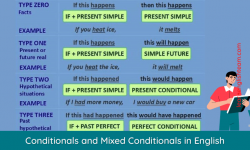Mastering Book Title Alignment with Emerging Market Trends
Curious what the magic formula for bestselling book titles is?
Every author knows the secret to hitting the bestseller list starts with a winning title. After all, your title is the very first thing your readers see. It’s what makes them click “buy” or skip right on to the next book.
But here’s the issue…
Most authors pick their book titles based on hunches. They go with a title that “sounds good” rather than what sells.
If you choose the wrong book title, you can have the most successful book in the world, but it’ll go completely unread.
This guide is going to show you how to pick a book title that actually works in today’s market.

What you’ll learn:
- Why Book Title Alignment Is More Important Than Ever Before
- The Latest Trends Influencing Reader Book Preferences
- How to Research Trend-Aligned Book Titles That Work
- How to Write Trend-Aligned Book Titles for Success
Why Book Title Alignment Is More Important Than Ever Before
The idea of book title alignment isn’t just marketing hype. It’s actually an essential survival skill in today’s book market.
Why? Well, consider this:
The book market is more competitive than it’s ever been. For instance, self-published titles on Amazon grew by 9% in 2024. That’s thousands of new books coming to market every day competing with you for reader attention.
Don’t believe it?
Less than 4% of books hit over 1,000 total sales. And it gets worse…
Even fewer books achieve sales in the thousands or even tens of thousands. In fact, just one in 10,000 books sells over 100,000 copies according to one study.
But before you hang up in despair, the good news is there is a way to stack the odds in your favor.
Books that align well with current trends in reader search interest enjoy a significant leg up on sales. When you’re acutely aware of what people are actively looking for in your genre, you can craft your book title to help ride that search wave.
The smart way to do this is to use a data-driven approach for identifying patterns that work. Modern tools like an AI book title generator can analyze data on thousands of successful book titles and current search market trends and suggest powerful combinations.
The Biggest Trends Influencing Reader Book Preferences
The single most powerful tool you have to predict book success is to keep your finger on the pulse of current market trends.
Here are the biggest book trends dominating the market in 2024 and beyond that will shape reader preferences for the foreseeable future.
Readers Are Craving Genre Mashups
Consumers today don’t want simple, singular genres. They crave multi-genre hybrid books that are more complex, layered, and have more crossover appeal.
The largest of these at the moment are “Romantasy” books. In other words, books that blend romance with fantasy and have been boosted to massive popularity across social media platforms.
Other trending book sub-genres include cozies with a dose of romance, science fiction with thriller elements, and self-help with memoir style storytelling.
Social Media Is The Biggest Book Discovery Engine
Platforms like TikTok and Instagram are more than just book marketing channels. They’ve evolved into primary discovery channels in their own right.
The most powerful of these right now is BookTok. Books that “sound good” in a 60-second video clip have a massive leg up over complicated titles that make little emotional sense.
The trend here is that short, punchy book titles win over long, descriptive ones.
Readers Want Emotional Connection Over Clever Wordplay
A reader who is scrolling for a book title wants to feel something instantly from your title. Clever wordplay or references don’t create that. Emotional triggers do.
Words that create an immediate emotional response from readers include love, hate, fear, hope, secret, hidden, forbidden, last, first, final, ultimate, breaking, and shattered.
The Fast Track Research Method for Trend-Aligned Titles That Work
Here’s a question for you:
What’s the number one difference between successful authors and struggling authors?
Answer: They research.
Research before they write, test, and then refine until they have a winning book title.
This is the research methods used:
- Examine the titles of your Top 10 competitors on Amazon
- Monitor book title discussions on social media
- Track trending hashtags on social media
A Step-By-Step Guide To Trend-Aligned Titles That Work
Now let’s get practical. How do you actually come up with a title that aligns with the current trends?
A Formula That Works for Most Titles
Most successful trend-aligned book titles follow this basic formula:
Emotional Trigger + Genre Indicator + Specific Promise
Examples: “The Last Enchantress”, “Secrets of the Heart Doctor”, “Breaking the CEO’s Rules”.
Create Multiple Title Options
Don’t settle on your first book title idea. Come up with at least 5-10 different options, then test which ones test best with your ideal reader.
You can test through social media polls or A/B test them in your book marketing later.
Keep Series Titles In Mind
If you are writing a book series, then the title has to work for book one and have the potential for setting up a successful future series.
Include elements in the book title that can be carried through a series and evolved.
Be Flexible When You Launch
Authors tend to think once they publish their book title is set in stone.
In fact, one secret most authors don’t know is that your book title isn’t locked in place permanently. If you get early signals that it’s not working as well as expected, don’t be afraid to switch.
Advanced Book Title Alignment Techniques
If you want to level up your book title game, here are some advanced techniques professional authors use.
Seasonal Trend Alignment
Book sales are not evenly distributed across the year. In fact, different genres have peak sales times when you can have your best shot at success.
For example:
- Romance peaks with Valentine’s Day and summer months
- Horror and thrillers peak in October for Halloween
- Self-help and personal development peak in January for the New Year
Reverse Engineering Bestsellers
Grab a current bestseller in your genre. Analyze why the title works and what market trend it’s tapping into.
Use that as a jumping off point to create a variation that has a similar pull, without directly copying the original title.
The Most Common Book Title Alignment Mistakes
Even authors who think they know what they’re doing make these mistakes..
Mistake #1: Following Outdated Trends
Just because something sold well a few years ago doesn’t mean it’ll have the same appeal today. Trends come and go. Always check trends are current and not historic.
Mistake #2: Ignoring Your Genre’s Title Expectations
Every genre has a set of title expectations that must be met to pique the interest of your target reader. Romance readers expect a certain emotional tone. Mystery readers expect intrigue. Fantasy readers are looking for world-building clues.
Mistake #3: Trying To Be Too Clever
Wordplay might impress at cocktail parties or win literary contests, but readers rarely share that same enthusiasm. Straightforward emotional titles almost always outperform clever puns or literary references.
Conclusion: Final Thoughts on Trend-Aligned Book Titles
Finding the right book title that aligns with current reader search interest isn’t a hunch. It’s not about jumping on the latest fad without any strategy either.
It’s an essential part of your marketing plan that starts with understanding what your potential readers want to read next and then positioning your book to help them find it.
The authors who will make it in the years ahead are the ones who treat their title selection as seriously as their plot development. Who research, test, and refine until they get it right.
Remember:
- Study what your competitors are doing.
- Use data to inform your decisions.
- Test, test, and test again.
- Always be flexible and open to change.
The best book title for your book is out there. Find it and you’ll find your readers.



